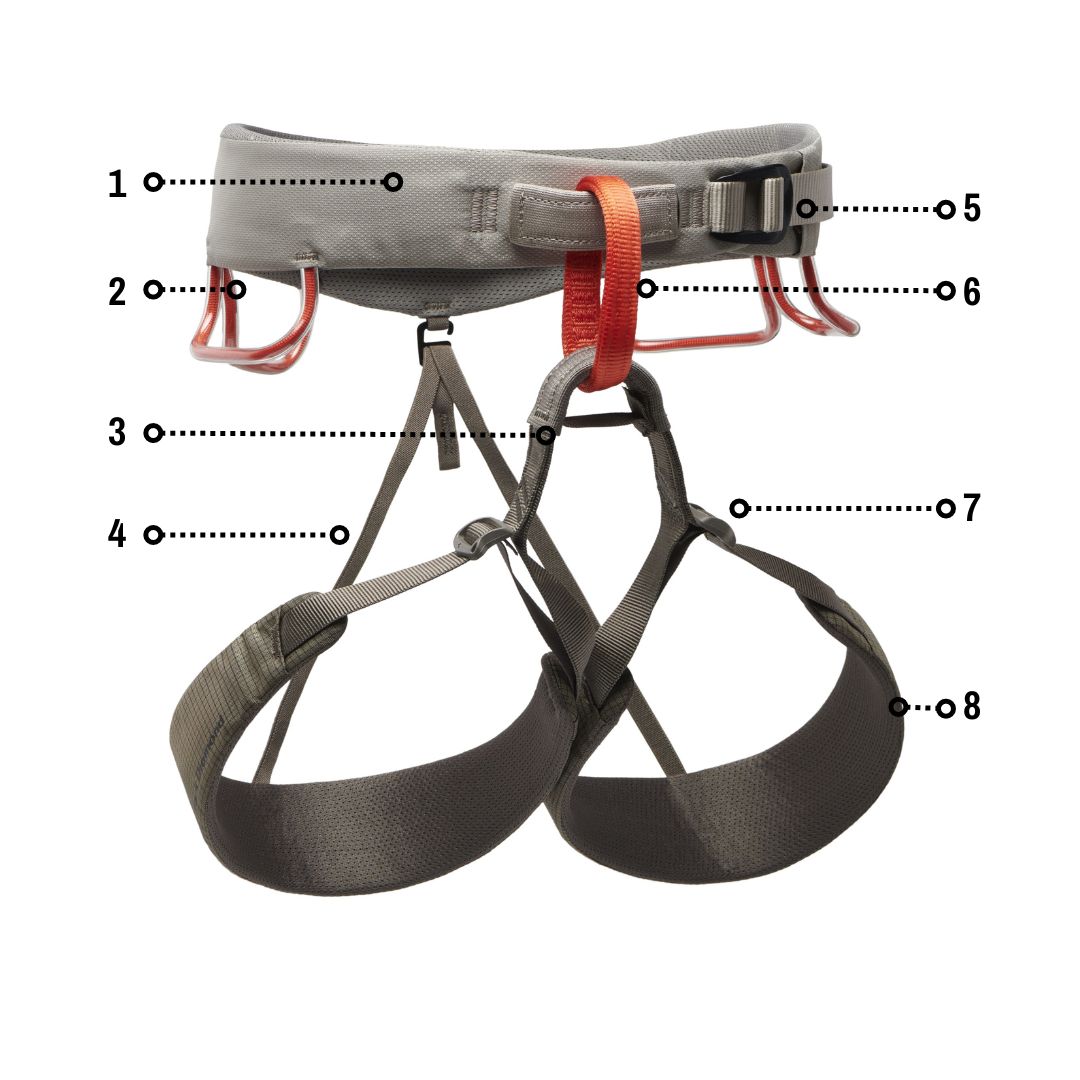When choosing a climbing harness, it is important to keep in mind that different mountain disciplines have different needs. A harness that may appear ideal for a short sport climb may be very limiting when facing an icefall, and vice versa. It is therefore important to consider the activities you will be doing most often in order to choose the harness that is best suited for you.

Sport Climbing
For sport climbing is important to have a lightweight and breathable harness that is comfortable both while climbing and during long periods of "resting" between climbs. The best harnesses in this regard are those with padding enclosed between two pieces of webbing, which are highly breathable and don't retain sweat. Within this category, there are more minimalist models designed for onsight climbing, and more robust models for those who spend extended periods "sitting" in their harness between attempts.
Trad and Big Wall Climbing
For those planning longer periods on the wall, such as trad climbers and big wall climbers, a well-padded harness that is also lightweight and functional is necessary. Carrying unnecessary weight when climbing for extended periods is a recipe for disaster, especially since other equipment used in these expeditions is already bulky and heavy. This type of equipment necessitates the use of harnesses with many gear loops so that more materials can be transported. Standard four gear loops may not be sufficient, so it is useful to have six or more, as well as a rear loop that can be useful for carrying a second rope or attaching a backpack that is not wanted on the back.
Ice Climbing
Ice climbing harnesses typically feature many gear loops and even carabiner holders for ice screws. The leg loops are almost always adjustable to accommodate the many layers typical of winter climbing. Some harnesses have a front-opening system that allows changes without having to remove the harness itself, even when wearing crampons, which is a significant convenience that saves time and pain.
Mountaineering
The mountaineering harness represents an intersection of characteristics of other models. Usually equipped with adjustable leg loops, it must be robust enough to withstand even very long falls but not limit movement during climbing. Usually featuring a soft and comfortable waistband for "rests" between pitches, it also has four gear loops and breathable fabrics.
Finding the correct size for a harness can sometimes be difficult. It is best to try on the harness with some clothes on to simulate the extreme situation of wearing heavy clothing, and tighten the harness to approximately half of its potential. This ensures that the harness will be adaptable to any situation you may encounter (a flat hand should easily fit between the waistband and the body, and about two fingers between the leg loops and leg).
